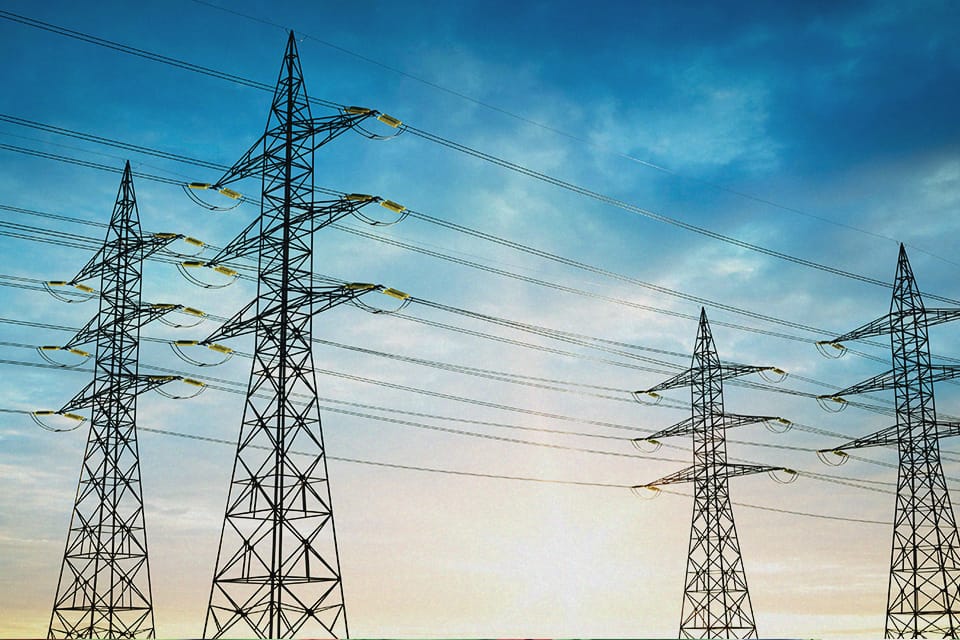
Reliable Energy and Supply Chains: Why Risk Management Matters

In today’s fast-paced and interconnected world, reliable energy is essential in every industry, but none more so than the utilities industry. Reliable energy ensures continuous production, timely deliveries, and a seamless flow of goods and services. Any disruption in the energy supply can ripple through supply chains, leading to costly delays, operational failure, and loss of revenue.
For utilities dependent on complex grids, infrastructure, and customer service requirements, maintaining uninterrupted energy is a top priority. But as critical as reliable energy is, so too is risk management.
In this article, we explore how the utilities industry can minimize potential supply chain disruptions and keep operations on track.
Why Reliable Energy Matters for Utilities
Reliable energy refers to the consistent, uninterrupted availability of power needed to run operations smoothly. For businesses, particularly in the utilities sector, this means having a dependable energy source that doesn’t suffer from frequent outages or fluctuations.
For the utilities industry, reliable energy is more than just a necessity — it’s the backbone of a safe and consistent service delivery. With rising energy demand, grid instability is becoming a bigger concern. According to a 2022 report from the North American Electricity Reliability Corporation (NERC), the US electricity grid faces a 5% to 20% likelihood of emergency conditions due to high demand, especially during peak periods.
Additionally, climate-related risks have further intensified reliability challenges. Extreme weather events have become more frequent, causing over 80% of major power outages in the US in the last two decades. The utilities industry must prioritize reliability to ensure the ripple effects of these events don’t extend to their customers or larger supply chains.
Why Risk Management is Essential
While reliable energy is vital, ensuring it remains so requires a proactive approach. Risk management helps companies foresee potential disruptions, put in place contingency plans, and mitigate preventable incidents.
In the utilities industry, which must maintain both energy generation and distribution, energy reliability is a multifaceted issue. A single grid failure can cascade into broad scale service disruptions, damaging customer trust and increasing operational costs. Without robust management, such events can catch utilities off guard, leading to extended downtime, regulatory penalties, and lost revenue.
Key Risks to Energy Reliability
Understanding and mitigating risks is crucial to maintaining reliable energy. The utilities sector is particularly susceptible to the following:
- Natural disasters: Hurricanes, earthquakes, and floods can damage energy infrastructure, leading to extended outages. According to the NOAA National Centers for Environmental Information (NCEI), the U.S. experienced 18 weather-related disasters in 2022 that exceeded $1 billion dollars in damage per event.
- Aging Infrastructure: Much of the energy grid infrastructure in developed countries is decades old. Without upgrades, equipment failures can occur at critical moments.
- Cyberattacks: With increased digitization, cyber threats pose a significant risk to energy infrastructure and supply chains. In 2021, a major U.S. pipeline operator suffered a ransomware attack that disrupted fuel supplies to nearly 45% of the East Coast. Utilities are prime targets for such attacks due to their integral role in national infrastructure.
- Geopolitical Instability: Dependence on foreign energy sources leaves utilities vulnerable to global market fluctuations and political instability in energy-exporting countries.
Managing these risks effectively requires a blend of preparedness, flexibility, and investment in resilient infrastructure. Reliable energy solutions are more likely when businesses plan for these eventualities rather than react after they occur.
Reliable Energy and Risk Mitigation
Energy Audits and Infrastructure Upgrades
One of the first steps in ensuring reliable energy is to conduct regular audits. These audits assess the health of a company’s infrastructure, identifying weaknesses that could lead to failure. Addressing these weaknesses proactively can prevent unexpected breakdowns that cause energy disruptions. In the utilities industry, upgrading aging transmission lines, transformers, and substations is crucial.
The U.S. Department of Energy’s Grid Modernization Initiative is working with partners to develop technologies that will help improve grid reliability, security, and flexibility for the demands of the 21st century. Investing in microgrids, smart technologies, and renewable energy sources improves reliability and resilience against disruptions.
Diversification of Energy Sources
Another key strategy is diversifying energy supply to reduce reliance on a sole source. Integrating renewable energy options like solar and wind, coupled with energy storage systems, offers utilities an alternative during outages or fuel shortages. This diversification also supports sustainability goals, helping utilities companies meet environmental regulations and reduce carbon footprints.
Developing Contingency Plans
Contingency planning is a cornerstone of risk management. Even with the best infrastructure, unexpected events can still occur. Utilities must plan for unexpected events, whether they be natural disasters or grid failures. By maintaining backup power systems, reserve fuel stock, and emergency protocols, utilities can reduce downtime and ensure customer needs are met, even during crises.
The COVID-19 pandemic highlighted the value of flexible contingency plans. Utilities that had risk mitigation strategies in place were better equipped to manage the operational challenges presented by the pandemic.
Monitoring and Predictive Maintenance
Predictive maintenance uses data analytics and IoT sensors to monitor energy systems in real-time. This allows businesses to detect potential issues before they become critical failures. Predictive maintenance can also extend the lifespan of energy systems by ensuring they are serviced before they break down.
According to the International Energy Agency (IEA), predictive maintenance has been shown to reduce the incidence of unplanned outages by up to 30%, saving utilities millions of dollars annually.
Reliable Energy and Risk Management Go Hand in Hand
For utilities, ensuring reliable energy is non-negotiable. However, energy reliability alone isn’t enough. Without effective risk management strategies in place, companies remain vulnerable to disruptions that can ripple through every aspect of their operations.
Through risk management practices such as energy audits, infrastructure upgrades, contingency planning, and predictive maintenance, businesses can safeguard their supply chains maintain operational continuity, even in the face of potential disruptions.
By taking a proactive approach, companies can not only ensure reliable energy, but also protect their long-term profitability and reputation. Investing in both reliable energy solutions and risk management strategies will pay off in resilience, helping businesses navigate an increasingly uncertain global landscape.
Veriforce has experts in the utilities industry that can streamline your business operations and enhance overall efficiency. Contact us to learn more about how we can help support your risk management and operational resilience outcomes.




